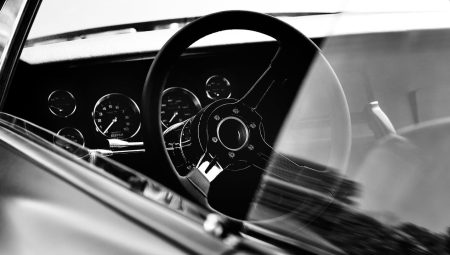Engine mounts are often the unsung heroes of your vehicle’s performance. They might not be the flashiest components, but they play a critical role in ensuring your engine runs smoothly. Think of them as the cushion that absorbs the shocks and vibrations generated by the engine. When these mounts fail, it’s like a domino effect; everything else can start to wobble and shake. This can lead to a myriad of problems, from decreased fuel efficiency to serious engine damage.
So, what causes these mounts to fail? Over time, they can wear out due to exposure to harsh conditions, such as extreme temperatures and road vibrations. Poor installation can also contribute to their premature demise. It’s crucial to keep an eye out for symptoms of failing mounts, like unusual noises or excessive vibrations. Ignoring these signs can lead to costly repairs down the line.
In conclusion, maintaining your engine mounts is essential for the overall health of your vehicle. Regular inspections and timely replacements can save you from the headaches of engine instability and keep your ride smooth. Remember, a little prevention goes a long way!
Understanding Engine Mounts
Engine mounts are the unsung heroes of your vehicle’s engine compartment. They secure the engine to the vehicle’s frame, acting like a cushion that absorbs vibrations and shocks. Imagine them as the shock absorbers for your engine, keeping everything stable and in place. Without these mounts, your engine would be bouncing around like a kid on a trampoline, leading to a chaotic driving experience.
These components are typically made from a combination of rubber and metal, designed to withstand the harsh conditions of the automotive environment. Over time, however, they can wear down due to factors such as:
- Natural wear and tear
- Exposure to extreme temperatures
- Corrosion from road salt and chemicals
Understanding how engine mounts function is crucial for maintaining your vehicle’s health. They not only minimize vibrations but also help maintain proper alignment of the engine with other components. If neglected, these mounts can lead to serious issues, making it essential to keep an eye on them. Regular checks can save you from future headaches and costly repairs!
Common Causes of Engine Mount Failures
Engine mounts are like the unsung heroes of your vehicle, quietly holding everything in place while absorbing vibrations. However, they can wear out over time due to several factors. One of the most common causes is wear and tear. Just like shoes that lose their grip after miles of walking, engine mounts can degrade from constant stress and movement.
Another significant factor is exposure to harsh conditions. Extreme temperatures, road salt, and even oil leaks can weaken the rubber and metal components of the mounts. This is akin to leaving a rubber band in the sun; it eventually loses its elasticity and strength.
Poor installation is also a culprit. If the mounts are not fitted correctly, they can become misaligned, leading to premature failure. To help you understand better, here’s a quick rundown of the main causes:
- Wear and Tear: Continuous stress from engine vibrations.
- Harsh Conditions: Exposure to extreme temperatures and corrosive substances.
- Poor Installation: Incorrect fitting leading to misalignment.
Recognizing these causes can be your first step toward preventing engine mount failures. By taking proactive measures, you can ensure that your vehicle runs smoothly and efficiently for years to come!
Symptoms of Engine Mount Problems
Engine mount problems can sneak up on you like a thief in the night, and recognizing the symptoms early can save you from a world of trouble. One of the first signs you might notice is excessive vibrations during your drive. If your car feels like it’s shaking more than usual, that’s a red flag! Additionally, keep an ear out for unusual noises—clunks or thuds when accelerating or turning can indicate that your mounts are failing.
Another symptom to watch for is misalignment. If your steering feels off or your car pulls to one side, it could be due to the engine not being properly secured. Don’t ignore these signs! Each symptom can lead to more severe issues, like engine damage or decreased performance, if left unchecked. Being proactive can make all the difference in maintaining your vehicle’s health.
The Impact of Engine Mount Failures on Performance
When engine mounts fail, the repercussions can be quite severe, akin to a ripple effect in a pond. The engine, which is meant to run smoothly, may start to vibrate excessively, creating an unsettling driving experience. These vibrations can not only be uncomfortable but can also lead to a series of mechanical issues. For instance, when the engine is unstable, it can cause misalignment of critical components, leading to:
- Reduced Fuel Efficiency: A misaligned engine can result in inefficient fuel consumption, costing you more at the pump.
- Increased Wear: Components that are not properly secured can wear out faster, leading to costly repairs.
- Safety Hazards: Excessive vibrations can affect handling, creating potential safety risks while driving.
Moreover, the stress on the engine mounts can lead to further damage, affecting not just the mounts themselves but also other engine components. Think of it as a house of cards; when one card falls, the entire structure becomes unstable. Therefore, addressing engine mount failures promptly is crucial for maintaining overall engine health and ensuring your vehicle runs smoothly for years to come.
Preventive Measures and Maintenance Tips
Taking care of your engine mounts is like nurturing a delicate plant; neglect can lead to serious issues down the road. Regular maintenance is key to ensuring your engine runs smoothly and efficiently. Start by scheduling routine inspections every six months, as this helps catch early signs of wear and tear. If you notice any excessive vibrations or hear strange noises, don’t delay in getting them checked out.
Additionally, consider the environment your vehicle operates in. If you frequently drive on rough roads or in extreme weather, your engine mounts may wear out faster. In such cases, be proactive by replacing them sooner rather than later. A good rule of thumb is to replace engine mounts every 50,000 to 60,000 miles, but always consult your vehicle’s manual for specific recommendations.
Lastly, keep an eye on the fluid levels and overall engine health. A well-maintained engine is less likely to exert undue stress on the mounts. Remember, a little attention goes a long way in maintaining optimal engine health and performance.
Frequently Asked Questions
- What are engine mounts and why are they important?
Engine mounts are crucial components that secure your engine to the vehicle frame. They minimize vibrations and help maintain stability, ensuring a smooth ride and optimal performance.
- How can I tell if my engine mounts are failing?
Look out for signs like excessive vibrations, unusual noises, or misalignment. If your vehicle feels bumpy or you hear clunking sounds, it might be time to check those mounts!
- What causes engine mount failures?
Engine mounts can fail due to wear and tear, exposure to harsh conditions, or improper installation. Regular inspections can help catch these issues early!
- How do engine mount failures affect my vehicle’s performance?
When mounts fail, you may experience increased vibrations and instability, leading to reduced fuel efficiency and potential safety hazards while driving.
- What maintenance tips can help prolong engine mount life?
Regular inspections and timely replacements are key! Addressing underlying issues promptly can significantly enhance engine health and performance.





